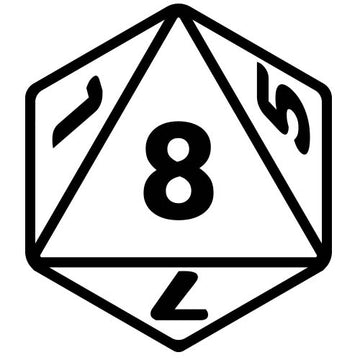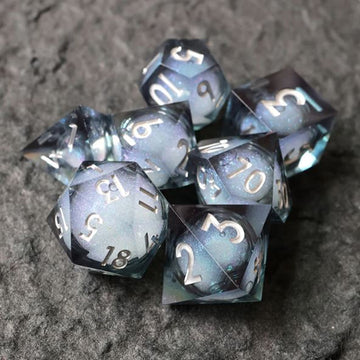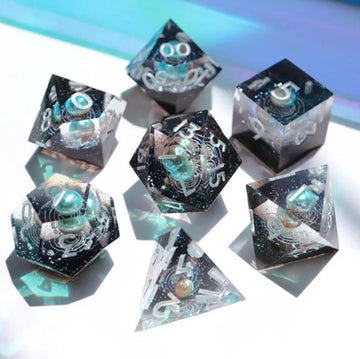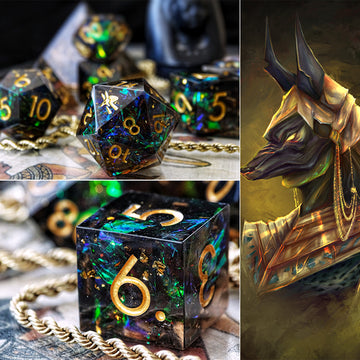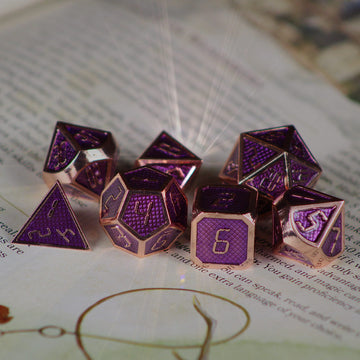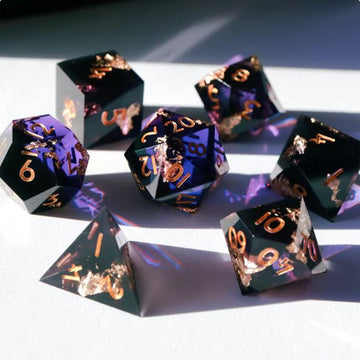Many people new to D&D have questions about what dice are needed for D&D. To play Dungeons & Dragons, you will need a DnD Dice set otherwise known as a 7-Dice Set. In fact, the 7-dice set is the standard because of D&D.
Here are the dice that make up the 7-dice set:
The d4 Die

The d4, the dice that resembles a pyramid, is used in several spells found in Dungeons and Dragons. It is also used as the hit die when your character is wielding smaller weapons like clubs and daggers. As an example, if you make an attack with a dagger and the Dungeon Master determines that your attack is a "hit," you'll then roll the d4 to determine if the damage taken by your enemy was a 1, 2, 3, or 4.
Also, be careful not to leave one of these on the floor. Stepping on a d4 will make you wish you had stepped on Legos!
The d6 Die

The cubic d6 is what most people visualize when you say the word, "dice." It has six sides, numbered 1 through 6. The d6 can be used for melee attack rolls, depending on the weapon your character is wielding. It is also used during the character creation process to determine your characters attributes. Some spells may require you to roll multiple d6s. For example, the Feeblemind spell deals 4d6 psychic damage to a target. As another example, the Maul melee weapon deals 2d6 bludgeoning damage. If you only have one d6, you'll need to roll the dice multiple times. Alternatively, you can obtain extra d6s for just such occasions.
The d8 Die

The d10 & The Percentile (d%) Die

The d12 Die

Probably the least-used dice in Dungeons and Dragons, the d12 is used to determine damage in a limited number of weapons, usually large "great" weapons utilized by Barbarians.
It also comes in handy in a few specific circumstances dealing with time of day or time of year.
The d20 Die

You'll always want to keep this dice close at hand when playing D&D because you'll use it more than any other piece in the 7-dice set. When attacking with a melee weapon or spell, the dungeon master will let you know the target number you must roll with the d20 in order to "hit" your target. Rolling too low mean you won't deal any damage at all to your opponent.
The d20 is also used in saving throws and ability checks. A high enough roll during a saving throw means your character avoids taking damage from an enemy attack. As an example, a too-low roll during a stealth check means your character's attempt at sneaking past a dozing guard will fail.

